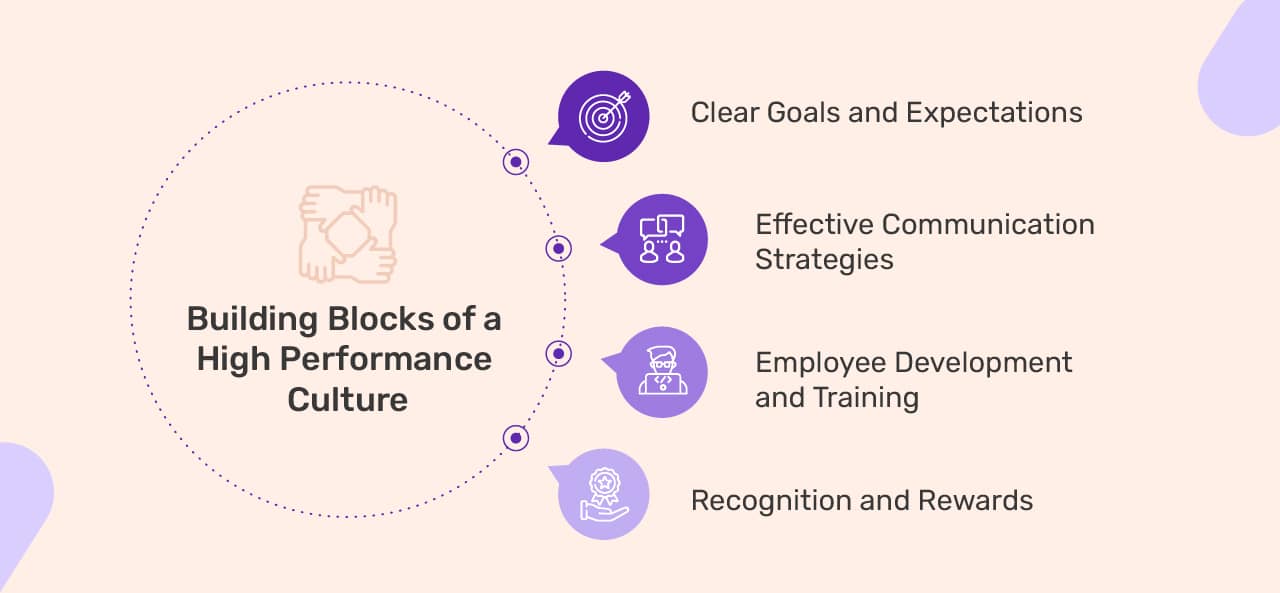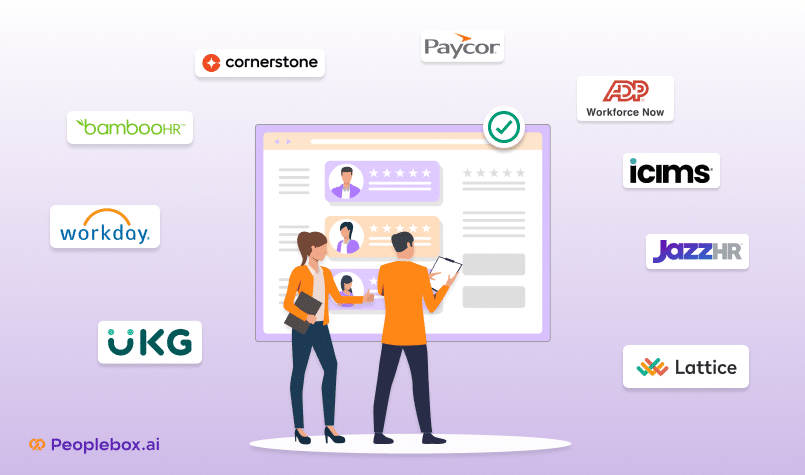Imagine a workplace where employees are energized, engaged, and consistently exceeding expectations. This isn’t just a dream; it’s the reality of a high performance culture.
But how do you create this thriving environment? How do you transform your organization from good to great? In this guide, we’ll unveil the secrets, providing actionable insights and practical tips to cultivate an organizational culture that fuels success.

What is a Culture of High Performance?
A culture of high performance is more than just achieving impressive results. It’s about creating an ecosystem where individuals feel valued, supported, and empowered to consistently excel.
Imagine Maya, a junior developer, feeling overwhelmed by a complex coding task. The team’s clear goals and deadlines provide a roadmap, guiding her efforts and fostering a sense of purpose. Open communication channels allow her to seek help from her mentor, a seasoned developer named John. Through mentorship and training programs, John not only shares coding techniques but also imparts valuable project management skills.
When Maya successfully tackles the task, public recognition at a team meeting boosts her morale and reinforces her contribution. This interconnected web of building blocks fosters a collaborative, supportive environment where Maya thrives, exceeding expectations and contributing to the team’s sustained high performance.
Common Characteristics of a Culture of High Performance
Continuous Improvement: At its core, a high-performance culture is marked by a relentless pursuit of improvement. It encourages individuals and teams to constantly reassess and enhance their skills, processes, and outcomes.
Clear Goals and Expectations: The culture thrives on well-defined, measurable goals and explicit expectations. This clarity provides a roadmap for employees, aligning their efforts with the overarching objectives of the organization.
Effective Communication: Open and transparent communication is the lifeblood of a high-performance culture. It ensures that information flows seamlessly across all levels, fostering collaboration, and minimizing misunderstandings.
Learning and Development: Embracing a mindset of continuous learning is crucial. Organizations with a high-performance culture invest in the development of their workforce, recognizing that an empowered and skilled team is a catalyst for success.
Recognition and Rewards: Acknowledging and appreciating achievements is not just a formality but a fundamental aspect. A high-performance culture recognizes the psychological impact of appreciation, motivating individuals to consistently excel.
Leadership Excellence: Leadership plays a pivotal role in cultivating a high-performance culture. Leaders set the tone, championing the organizational values and inspiring others through their behavior and actions.
Adaptability and Resilience: In a dynamic business environment, adaptability is key. A high-performance culture thrives on resilience, where setbacks are viewed as opportunities to learn and grow, rather than insurmountable obstacles.
Why Building a High Performance Culture is Important
Building a high-performance culture is crucial for several reasons, impacting both your organization and your employees:
For your organization:
- Increased Productivity and Profitability: High-performing employees are more engaged, efficient, and innovative, leading to better results and increased profitability.
- Reduced Turnover Costs: Engaged employees are less likely to leave, saving your company time and money associated with recruitment and onboarding.
- Enhanced Brand Image: A positive culture attracts top talent and fosters customer loyalty, boosting your brand image and reputation.
- Improved Adaptability: A culture of continuous learning and open communication allows your organization to adapt to changing market conditions and stay ahead of the curve.
For your employees:
- Increased Job Satisfaction and Engagement: Feeling valued, supported, and empowered leads to higher job satisfaction and engagement, promoting well-being and motivation.
- Personal and Professional Growth: Opportunities for learning and development help employees reach their full potential, both personally and professionally.
- Sense of Belonging and Community: A positive culture fosters collaboration, teamwork, and a sense of belonging, creating a supportive and enjoyable work environment.
- Increased Recognition and Reward: High-performing cultures recognize and reward achievements, boosting morale and employee motivation.
Overall, building a high-performance culture creates a win-win situation for both your organization and your employees. It leads to a more productive, profitable, and innovative workplace where everyone feels valued and empowered to succeed.
What are the Building Blocks of a High Performance Culture?
A high-performance culture isn’t built on chance. It’s a carefully constructed ecosystem where individuals and teams thrive, consistently exceeding expectations. But what are the key components that make up this winning formula? Let’s explore the fundamental building blocks:

Let’s take the example of an IT firm to understand this better.
Clear Goals and Expectations
Let’s first take a closer look at the software development team. Here, clear goals mean setting specific, measurable targets for each project. For instance, the team might aim to launch a new software version within a certain timeframe, including specific features. This clarity ensures that every team member knows their role, aligning efforts with the main goal. It not only gives a sense of purpose but also directs everyone’s energy towards a shared achievement.
With employee performance management software like Peoplebox, your team can set multiple goals, aimed at enhancing individual and collective performance. This user-friendly platform empowers teams to establish clear, measurable objectives aligned with the business goals.

Employee Empowerment
Empowering employees to take ownership of their work and make decisions fosters a sense of accountability and autonomy. Providing opportunities for skill development, autonomy in decision-making, and recognition for contributions empowers employees to perform at their best. When employees feel empowered and trusted, they are more likely to innovate, collaborate, and drive results, contributing to a culture of high performance.
Promoting Collaboration and Teamwork
Collaboration and teamwork are essential for achieving collective goals and driving organizational success. Encouraging cross-functional collaboration, fostering a culture of knowledge sharing, and promoting teamwork across departments and teams can break down silos and drive innovation. By promoting a collaborative mindset and creating opportunities for teams to work together towards common goals, organizations can leverage the collective intelligence and expertise of their employees to achieve greater results.
Cultivating a Growth Mindset
Fostering a growth mindset, where challenges are viewed as opportunities for learning and development, is essential for building a culture of high performance. Encouraging employees to embrace challenges, persist in the face of setbacks, and seek out opportunities for growth enables them to continuously improve and excel. By promoting a work culture where learning and development are prioritized, organizations can cultivate resilience, innovation, and a drive for excellence among their employees.
Leveraging Technology
Embracing technology is essential for fostering a high-performance culture. Modern tools and platforms streamline processes, enhance communication, and facilitate collaboration. From project management software to communication platforms and performance management systems, technology improves efficiency, transparency, and accountability. By investing in the right technology solutions, organizations create a digital infrastructure that drives productivity, innovation, and success.
Build a Culture of High Performance with Peoplebox
Peoplebox supercharges your journey to a high performance culture by empowering goal setting and management, tracking progress in real-time, and facilitating continuous feedback and coaching.
It provides a central hub where you can set clear, measurable goals aligned with company priorities, ensuring everyone pulls in the same direction. The platform offers real-time insights and analytics so you can identify areas for improvement quickly, and its continuous feedback and coaching features foster a culture of growth and development, boosting performance and engagement across the board.
With Peoplebox, you’ll have the tools and data you need to create a working environment where your employees consistently excel.
Ready to empower your team, track progress effortlessly, and cultivate a culture of continuous growth?







